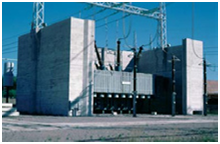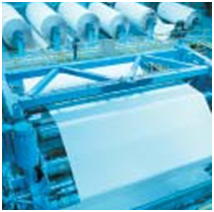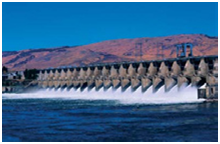Measuring Moisture in Oil
Vaisala HUMICAP® Hand-held Moisture Meter MM70
1. Where should I install the probe for the best measurement?
The probe should be installed in a location that provides a representative sample of your entire oil system (e.g. a high flow feed line, or return line to reservoir). The sensor can only read what it is directly in contact with. Locations to avoid include the bottom of oil reservoirs where free water may settle out and areas where air bubbles could form due to turbulence caused by pumps or agitators.
2. What is the maximum flow rate the sensor can withstand?
The flow limitation of the sensor is affected by the shear force applied by a high flow oil with significant viscosity. If high enough, this force could bend or damage the sensor contacts. We recommend a maximum linear flow rate of 1 meter/second.
3. What is the response time of the sensor?
The Vaisala thin-film polymer capacitive sensor is extremely responsive to a small step change in moisture level. This can be demonstrated by grasping the probe in your hand. The moisture from your skin will be detected within 2-3 seconds. However, this response time is diminished due to the viscosity of the oil and the slow rate of travel of water through the oil. In still oil at 20 ˚C, 90% of the reading will be reached in ten minutes. This response time dramatically improves by installing the probe in a flowing oil line – remember, the sensor can only measure what it is in direct contact with.
4. Can the sensor measure % water by volume in oil (free or emulsified water)?
No. The Vaisala HUMICAP® sensor is designed to measure only water that is in the dissolved state (below the saturation point).
5. What does the water activity (aw) output indicate?
Water activity (aw) is a measurement which indicates moisture (water) content in a fluid based on a scale from 0…1 (0 being completely dry, 1 being completely saturated). Just like air, every fluid (e.g. lubricating oils, hydraulic fluids, jet fuels) has the ability to hold water in the dissolved state below the saturation point. Once the saturation point of that fluid has been reached, any additional water that enters the fluid will separate out into “free water” which can be seen as a distinct layer – usually below the oil.
6. What is the benefit of measuring aw versus ppm?
The saturation point of most fluids is affected not only by the base oil type, additives, emulsifiers and anti-oxidants, but also by the fluid’s age, temperature and the chemical reactions that take place over the life of the fluid.
Aw is a parameter that will always indicate how close a fluid is to reaching its saturation point. PPM can also give you the same indication, provided that:
1. the saturation point of the fluid is known, and
2. the saturation point remains constant.
This is best illustrated by the following example:
Brand new oil, temp: 90˚C Absolute water content: 500 ppm Saturation point: 1000 ppm. This oil can hold another 500 ppm before it becomes saturated.
Same oil after 6 months of use, temp: 35˚C Absolute water content: 500 ppm. Saturation point: 550 ppm. This oil can only hold another 50 ppm before it becomes saturated.
In the above example, the oil has undergone a drop in temperature and aged 6 months. Although the absolute water content did not change (500 ppm – no new water entered the oil), the margin to the saturation point changed dramatically from 500 ppm to only 50 ppm!
In other words, if ppm was the only parameter you were monitoring, there would be no indication to warn you that your oil has come dangerously close to the saturation point. However, if you were monitoring water activity, you would have seen the reading change from 0.50 aw (500ppm/1000ppm) to 0.91 aw (500ppm/550 ppm).
7. Does the sensor need to be programmed or calibrated to each specific fluid you are using?
No. Each sensor comes calibrated from Vaisala lab with a NIST traceable certificate included. Since the sensor measures moisture content based on an absorption principle, it does not need to know the saturation point of the fluid. The sensor simply absorbs or desorbs water to establish equilibrium with the surrounding oil/water solution.
8. In which fluids can the sensor be used?
In the ten plus years since Vaisala launched its first moisture in oil transmitter, we have been successful in nearly all transformer oil, lubricating oil, and hydraulic fluid applications we have encountered. We have also experienced good performance in jet fuel and phosphate ester fluids. If you are working with a fluid outside of these types of liquids, please contact Vaisala to check for compatibility with our sensor.
Typical Applications:
 On-line measurement of moisture in oil is an essential part of a comprehensive, predictive maintenance program for transformers.
On-line measurement of moisture in oil is an essential part of a comprehensive, predictive maintenance program for transformers.
 Continuous measurement of moisture in the lubrication system of a paper machine can dramatically improve bearing life and eliminate machine downtime.
Continuous measurement of moisture in the lubrication system of a paper machine can dramatically improve bearing life and eliminate machine downtime.
 Power turbine maintenance costs can be significantly reduced by real-time monitoring of moisture levels in turbine lubricating oil and hydraulic fluids.
Power turbine maintenance costs can be significantly reduced by real-time monitoring of moisture levels in turbine lubricating oil and hydraulic fluids.
Source: Vaisala

